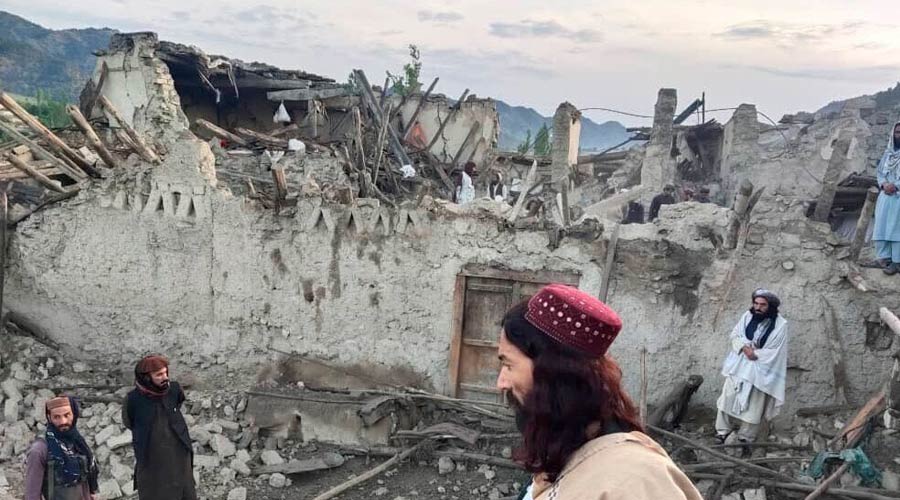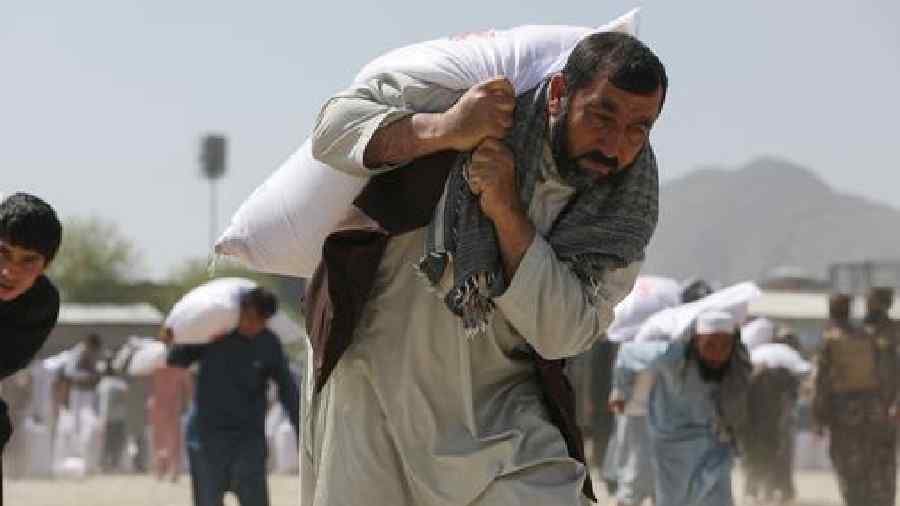Afghan authorities struggled on Thursday to reach a remote area hit by an earthquake that killed 1,000 people but poor communications and a lack of proper roads hampered their efforts, officials said.
The magnitude 6.1 earthquake struck early on Wednesday about 160km, southeast of Kabul, in arid mountains dotted with small settlements near the border with Pakistan. “We can’t reach the area, the networks are too weak, we are trying to get updates,” Mohammad Ismail Muawiyah, a spokesman for the top Taliban military commander in hardest-hit Paktika province, told Reuters, referring to telephone networks.
The earthquake killed some 1,000 people and injured 1,500 injured, he said. More than 3,000 houses were destroyed. About 600 people had been rescued from various affected areas on Wednesday night, he said. The town of Gayan, close to the epicentre, sustained significant damage with most of its mud-walled buildings damaged or completely collapsed, a Reuters team said.
The town was bustling with Taliban soldiers and ambulances as a helicopter bringing in relief supplies landed nearby, whipping up huge swirls of dust. About 300 people sat on the ground waiting for supplies. The rescue operation will be a major test for the hardline Islamist Taliban authorities, who took over the country last August after two decades of war and have been cut off from much international assistance because of sanctions.
The Taliban-led ministry of defence is leading rescue efforts. Afghan media published pictures of houses reduced to rubble and bodies swathed in blankets on the ground in the hours after the earthquake struck.
Accurate information has been limited from remote mountain villages. Large parts of South Asia are seismically active because a tectonic plate known as the Indian plate is pushing north into the Eurasian plate. In 2015, an earthquake struck the remote Afghan northeast, killing several hundred people in Afghanistan and nearby northern Pakistan.
That toll was expected to rise, reflecting the poverty of the region, where some residents live in homes of clay and straw, and the difficult terrain, far from many clinics or hospitals that could help the wounded. The Taliban government said on Thursday that relief supplies — by air from Iran and Qatar and by land from Pakistan — had arrived in the country.
It wasn’t immediately clear whether they had reached the victims of the earthquake, which has also displaced thousands. The worst damage appeared to be in Paktika province, along the border with Pakistan, although the centre of the 5.9-magnitude earthquake was about 28 miles southwest of the city of Khost, in the country’s southeast, the USGeological Survey said.
The director of information and culture in Paktika, Raees Hozaifa, said on Wednesday that an additional1,500 people were injured. Shabir Ahmad Osmani, his counterpart in Khost province, said 40 people had died and more than 100 were injured there.












